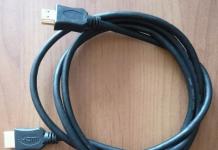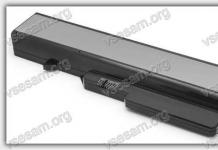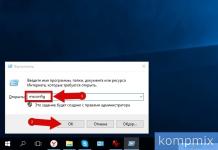There is a new open format covering the world of high-performance PCs. The M.2 format is designed for manufacturers to fit various devices into a tiny space and reduce power consumption. But in reality, upgrading to an M.2 drive or accessory requires a little forethought.
Where did the M.2 format come from?
Previously known as the next-generation form factor (NGFF), M.2 technically replaces the mSATA standard, which was popular among manufacturers of ultra-compact laptops and other small gadgets. This may seem surprising since most M.2 drives sold at retail are designed for use in full-size desktop computers, but M.2 has effectively replaced mSATA HDDs and SSDs in compact laptops such as the Apple MacBook or Dell XPS 13. They are simply sealed inside the body and cannot be updated by most users.
What can he do
M.2 is more than just an evolutionary form factor. It has the potential to completely replace the legacy Serial ATA format. M.2 is a slot that can interface with SATA 3.0 (the cable that's probably currently connected to your desktop PC's storage), PCI Express 3.0 (the default interface for graphics cards and other major expansion devices), and even USB 3.0.
This means that - perhaps - any storage or disk drive, GPU or port extension, or low-power gadget using a USB connection can all be installed simultaneously on a card connected to the M.2 socket. The reality is a little more complicated - for example, a single M.2 slot only has four PCI Express lanes, which is a quarter of the total that graphics cards typically require, but the flexibility of this tiny slot is impressive.
By using the PCI bus instead of the SATA bus, M.2 devices can transfer data anywhere from 50% to approximately 650% faster than standard SATA, depending on the capabilities of the motherboard and the M.2 card itself. If you have the option to use an M.2 SSD on a motherboard that supports PCI Gen 3, it can be significantly faster than a regular SATA drive.
What devices use the M.2 slot
For now, M.2 is primarily used as an interface for ultra-fast SSDs in both laptops and desktops. If you go to a computer hardware store and ask for an M.2 drive, they will almost certainly show you an SSD with an M.2 connector.
Some laptop models also use the M.2 port as a means of wireless connectivity by installing tiny, low-power cards that combine Wi-Fi and Bluetooth radios. This is less common on desktops, where the simplicity of a USB key or PCIe 1x card is preferred.
Finally, some companies are starting to expand the use of slot into categories that are not suitable for storage or expansion. While no one has yet produced an M.2 graphics card, Intel sells its speed-boosting "Optane" cache in the M.2 format.
Does my computer have an M.2 slot
If your computer was manufactured or built in the last few years, it likely has an M.2 slot. Unfortunately, the flexibility of the format means that actually using it isn't as simple as just plugging in a card.
M.2 cards come with two main compatibility variables: length and key. The first is pretty obvious - your computer must have enough physical space to support the length of the card you want to use. The second variable simply means that the card's connector must match the slot into which you will insert it.
Length M.2
For desktop computers, length is usually not an issue. Even a tiny Mini-ITX motherboard can accommodate the longest M.2 card, which is 110 millimeters long. Some cards are up to 30mm long. Typically, you'll want to match the board to the size intended for use by your motherboard manufacturer, as the recess at the end of the PCB allows for a small screw to be used to hold it securely in place.
All M.2 drives use the same width, determined by the connection. "Size" is expressed in the following format; check compatibility with your laptop or motherboard when choosing:
- M.2 2230: width 22 mm and length 30 mm.
- M.2 2242: width 22 mm and length 42 mm.
- M.2 2260: width 22 mm and length 60 mm.
- M.2 2280: width 22 mm and length 80 mm.
- M.2 2210: width 22 mm and length 110 mm.
Some motherboards are flexible, offering mounting holes for a retaining screw at some or all of these intervals.
M.2 key

Although the M.2 standard uses the same 22mm wide slot for all cards, it is not necessarily the same slot. Since M.2 is designed to be used with so many different types of devices, it has several similar ports.
- B Key: The gap on the right side of the card (left of the host controller) is used, with six pins to the right of the gap. This configuration supports PCIe x2 bus connections.
- M Key: The gap on the left side of the card (on the right side of the host controller) is used, with five pins to the left of the gap. This configuration supports PCIe x4 bus connections for double the throughput.
- B+M Key: uses both of the above spacing, with five pins on the left side of the card and six on the right. Due to their physical design, B+M Key cards are limited to PCIe x2 speeds.
M.2 cards with B Key interface can only be installed in the B Key host slot and also for M Key. But cards with a B+M key can fit into a B or M host slot since they have gaps for both.
Check the specifications of your laptop or motherboard to see which one is supported. We recommend looking at the documentation rather than looking at the slot with your eyes, as the two key standards can be easily confused.
What you need to install an M.2 card
A little. Most M.2 cards are solid state drives and are automatically recognized by your operating system based on AHCI drivers. In Windows 10, most Wi-Fi and Bluetooth cards are also recognized automatically, common drivers are activated immediately, and specific drivers are loaded later. However, you may need to enable the M.2 slot through settings in your computer's BIOS or UEFI. You will also need a screwdriver to insert the mounting screw.
Can I add an M.2 card if my computer doesn't have a slot?
For laptops the answer is no, the design of modern laptops is so compact that there is no room for any unplanned expansion. If you're using a PC, you're in luck. There are many adapters on the market that already use the PCIe x4 slot on the motherboard. However, if your motherboard can't boot from PCIe, you won't be able to install this M.2 drive as a boot drive, meaning you won't benefit from much speed. So keep this in mind - if you want all the benefits of an M.2 drive, you'll probably need a motherboard that supports it.
The different types of keys are marked on or near the end contacts (gold plated) of the M.2 SSD, as well as on the M.2 connector.
The illustration below shows M.2 SSD keys on M.2 SSDs and compatible M.2 slots with slots to allow the drives to be inserted into the appropriate slots:
Please note that M.2 SSDs with B key have a different number of end pins (6) compared to M.2 SSDs with M key (5); This asymmetrical design avoids the mistakes of placing an M.2 SSD with a B key in slot M, and vice versa.
What do the different keys mean?
M.2 SSDs with Key B end pins can support SATA and/or PCIe protocol depending on the device, but are limited by the speed of PCIe x2 (1000MB/s) on the PCIe bus.
M.2 SSDs with M key end pins can support SATA and/or PCIe protocol depending on the device, and support PCIe x4 speeds (2000MB/s) on the PCIe bus if the host system also supports x4 mode.
M.2 SSDs with B+M key end contacts can support SATA and/or PCIe protocol depending on the device, but are limited to x2 speeds on the PCIe bus.
More details
Which M.2 and connector configurations are not compatible?

SSD Key M.2 Key B Key M
SSD end contacts SSD edge connector - B Key SSD edge connector - M Key
Incompatible connectors Not Compatible Sockets - B Key Not Compatible Sockets - M Key
What are the benefits of having a B+M key on an M.2 SSD?
B+M keys on M.2 SSDs provide cross-compatibility with various motherboards, as well as support for the corresponding SSD protocol (SATA or PCIe). The host connectors on some motherboards may be designed to accept only M-keyed SSDs or only B-keyed SSDs. B+M-keyed SSDs are designed to address this issue; however, plugging an M.2 SSD into the slot does not guarantee it will work, it depends on the overall protocol between the M.2 SSD and the motherboard.
What types of M.2 SSD host connectors are found on motherboards?
M.2 host connectors can be B-key based or M-key based. They can support both the SATA protocol and the PCIe protocol. Conversely, they can only support one of the two protocols.
If the SSD terminal pins are B+M keyed, they will physically fit into any host connector, but you must check the motherboard/system manufacturer's specifications to ensure protocol compatibility.
How do I know what length of M.2 SSD my motherboard supports?
You should always check your motherboard/system manufacturer's information to verify supported card lengths, however most motherboards support 2260, 2280, and 22110. Many motherboards have a removable retaining screw allowing the user to install a 2242, 2260, 2280, or even 22100 M.2 SSD . The amount of space on the motherboard limits the size of M.2 SSDs that can be installed in the slot and used.
What does "socket 1, 2 or 3" mean?
Different connector types are part of the specification and are used to support special types of devices in a connector.
Socket 1 is designed for Wi-Fi, Bluetooth®, NFC and WI Gig
Socket 2 is designed for WWAN, SSD (cache memory) and GNSS
Socket 3 is for SSD (SATA and PCIe, speed up to x4)
Does Socket 2 support both WWAN and SSD?
If the system does and does not use Socket 2 to support a WWAN card, it can be used for an M.2 SSD (usually a compact form factor such as 2242) if it has a B key. M.2 SATA SSDs can be inserted into WWAN compatible slots , if the motherboard supports it. Typically, low-capacity M.2 2242 SSDs are used for caching along with a 2.5-inch hard drive. In any case, you should review the system documentation to verify M.2 support.
Is it possible to hot-plug an M.2 SSD?
No, M.2 SSDs are not hot-pluggable. Installation and removal of M.2 SSDs is only allowed when the system is powered off.
What are single-sided and double-sided M.2 SSDs?
For some space-constrained embedded systems, M.2 specifications provide varying thicknesses of M.2 SSDs—3 single-sided versions (S1, S2, and S3) and 5 double-sided versions (D1, D2, D3, D4, and D5). Some platforms may have specific requirements due to space limitations under the M.2 connector, see image below (Property of LSI).

Kingston's SSDM.2 meets the specifications of dual-sided M.2 and can be installed in most motherboards compatible with dual-sided M.2 SSDs; Contact your sales representative if you require single-sided SSDs for embedded systems.
What's planned for the future?
The next generation of M.2 PCIe SSDs will move away from using the older AHCI drivers currently built into operating systems to a new architecture using the new Non-Volatile Memory Express (NVMe) host interface. NVMe was designed from the start to support NAND-based SSDs (and possibly newer persistent memory) and delivers even higher levels of performance. Preliminary production testing shows its speeds to be 4 to 6 times faster than current SATA 3.0 SSDs.
It is expected that it will begin to be implemented in 2015 in the corporate sphere, and then transferred to client systems. As the industry prepares the ecosystem for the release of NVMe SSDs, beta drivers already exist on many operating systems.
To begin with, it is worth understanding the difference between M.2 SSD and 2.5-inch SSD and mSATA, it lies in the different types of connection to the motherboard of a laptop or PC.
Enough time has passed since the creation of the classic 2.5” SSD drive for new form factors to emerge, such as mSATA SSD, M.2 SSD and NVMe. In this article, we will look at NVMe technology, how it differs from standard drives running on the SATA bus, and whether all M.2 drives are classified as NVMe.
Before buying an ssd m2 NVMe, you should figure out what type of drive your computer or laptop motherboard supports. If everything is quite clear with the SATA 2.5 and mSATA form factor, then with M.2 it’s not so simple.
Almost all PC motherboards have an output for a SATA drive, but not all have a connector on the motherboard for an M.2 drive. The same is true with motherboards in laptops. Older laptops only have a connector for a SATA 2.5” drive and the maximum that can be installed is a SATA SSD drive, but more modern laptops have additional connectors on motherboards for an M.2 drive.

If your motherboard has a slot like the one shown in the photo above, then you can install an M.2 drive.

And everything would be great if the M.2 Slot were of the same type and the M.2 boards themselves were only one size. But let's take things in order, starting with the types of boards.
Types of SSD M2
The M.2 drive comes in four subtypes: 2230, 2242, 2260, and the most popular 2280. The first two digits indicate the width of the board, the second two digits indicate the length.

Now that you know whether there is a slot on the motherboard at all and what length of M.2 drive your board supports, let’s move on to the type of slot.
There are 2 types of buses on which the M2 operates, this is a SATA bus or a PCIe bus, and there is also a slot type with “M” and “B” keys.

As a rule, an M2 drive running on a SATA bus supports 2 keys “M” + “B”. The M2 NVMe SSD drive operating on the PCIe and AHCI bus will have one “M” key.

From the example picture you can see that an M2 SATA SSD board with an M+B key can be installed in most slots, while an M2 NVMe SSD with an “M” key is physically impossible to install in slot “B”, so pay attention to which slot exactly installed on your computer motherboard. If you need more detailed information about the interface and keys, you can look at wiki .
What are the differences between M2 and NVMe
M.2 is just a form factor. M.2 drives can come in SATA versions (eg M.2 Samsung 860 EVO) and NVMe versions (eg Samsung 970 EVO)

As you can see, these two boards are very similar in appearance, but have a slight difference in the connection connector. SATA M.2 SSDs and 2.5-inch SATA SSDs actually work with the same characteristics. NVMe M.2 drives operate on the PCIe bus, and these are completely different performance indicators, they are significantly higher than that of the SATA bus.
What is NVMe
NVMe is an open standard designed for "non-volatile memory Express" that allows modern SSDs to operate at the read/write speeds of their flash memory. Essentially, this approach allows SSD flash memory to operate directly over the PCIe interface, rather than through legacy SATA technology. In other words, NVMe is a description of the bus that a component uses to electrically communicate with a PC, rather than a new type of flash memory. It's also not form factor specific, so NVMe drives can come in M.2 or PCIe card form factors. In both form factors, the component is electrically connected to the PC via PCIe rather than via the SATA bus.
Modern motherboards use SATA III with a maximum throughput of 600 MB/s (or 300 MB/s for SATA II). Thanks to this connection, most SSDs provide read/write speeds of around 530/500 MB/s. In comparison, a 7200 RPM SATA drive provides speeds of about 100 MB/s depending on age, condition, and degree of fragmentation. NVMe drive provides write speeds up to 3500 MB/s. This is 7 times more than SATA!
SSD M2 compatibility
We've figured out the types, sizes and operating buses of M2, now let's look at the compatibility of M.2 SSD with your PC or laptop.
Many manufacturers install on motherboards a slot for M.2 with an “M” key and with support for a bus of your choice – SATA or PCIe. That is, you buy M.2 SATA or M2 NVMe and any of the drives will work.
But there are cases when the motherboard only works on one of the two buses, and does not support, for example, the new NVMe standard or the old SATA. To make sure that your motherboard is compatible with the M2 SSD drive you are purchasing, I will show an example with a motherboard from Asus.

We go to the BIOS, then to the Advanced section and find the line “M.2 Configuration”, then in the drop-down menu you can see that the motherboard supports SATA and PCIe buses, and therefore M.2 SSD will work on such a motherboard as SATA, and NVMe.
Well, given the speed benefits of NVMe drives, it's definitely worth considering when upgrading your PC or laptop. Is the higher price of ssd m2 nvme right for your budget, especially if your application that you work with frequently is hard drive intensive or requires constant hard drive read/write.
Video

M.2 (NGFF)– the general name of the form factor or physical interface for SSD drives, mobile WiFi adapters, 3G/4G modems and other computer components for miniature devices such as tablets, ultrabooks or nettops.
We have already talked about the new form factor using an example - this material can be found at the link.
However, M.2 was designed not only for SSDs, but also for WiFi, WiGig, Bluetooth adapters, GPS/GLONASS modules (GNSS), NFC modules, and other devices and sensors.

Previously, in mobile devices, the listed modules and adapters were connected using a mini PCI Express connector and had the popular full- or half-length Mini Card form factor. In turn, compact SSD drives had the same Mini Card form factor, but for the mSATA interface.
M.2 or Next Generation Form Factor replaced mSATA and mini PCIe, combining and expanding connectivity options, as it is capable of working with a large number of logical interfaces (Host Interface). In addition, the M.2 connector takes up less space in a mobile device, and there are several times more design options compared to the Mini Card due to the appearance of several M.2 (NGFF) sizes, depending on the width and height.
What you need to know about M.2?
- The M.2 (NGFF) specification includes devices that can be soldered to the motherboard, as well as a device that can be connected to various devices. The M.2 connector takes up 20% less space than the mini PCIe connector. The M.2 connector has a total of 67 pins, which can be separated by partitions - keys. Depending on the type of key, it is assumed that the connected devices are separated according to their intended purpose.
- The logical interfaces for the M.2 connector can be PCI Express, SATA, USB, Display Port, I2C, SDIO, UART and others.
- M.2 device sizes are standardized and grouped into types. The width of M.2 devices can be 12, 16, 22 or 30 millimeters. Length – 16, 26, 30, 38, 42, 60, 80 or 110 millimeters. For example, an M.2 SSD with a width of 22 mm and a length of 80 mm is designated "Type2280". (clearly shown in the schematic diagram of M.2 devices by size).
- The thickness of M.2 devices, more specifically the protruding components at the top and bottom, is also standardized. Devices can be either single-sided or double-sided - elements can be located on one side of the printed circuit board or on two.
Nomenclature designation for M.2 (NGFF) devices
Type XX XX- XX-X-X* Type XX XX-XX- X-X*| M.2 key name (Key ID) | Number of involved contacts of the M.2 connector, pcs. | M.2 socket logical interface options |
| A | 8-15 | PCIe x2 / USB / I2C / DP x4 |
| B | 12-19 | PCIe x2 / SATA / USB / PMC / IUM / SSIC / UART-I2C |
| C | 16-23 | |
| D | 20-27 | Key reserved for future use |
| E | 24-31 | PCIe x2 / USB / I2C-ME / SDIO / UART / PCM |
| F | 28-35 | Future Memory Interface (FMI)|
| G | 39-46 | Will not be used for standard M.2 devices. Reserved for third party devices. |
| H | 43-50 | Key reserved for future use |
| J | 47-54 | Key reserved for future use |
| K | 51-58 | Key reserved for future use |
| L | 55-62 | Key reserved for future use |
| M | 59-66 | PCIe x4/SATA |
* - If the second letter of the key is indicated, then the module is universal, compatible with two types of keys in the M.2 connector.
For example, it can be deciphered as follows: width – 22 mm, length 80 mm, double-sided layout, elements protrude 1.35 mm from the top and bottom, suitable for installation in a slot with B or M keys.
In general, manufacturers do not often indicate the nomenclature designation of M.2 modules. But, in fact, the designation can be compiled independently based on visual signs, as well as by simple measurements of the device.
Which M.2 (NGFF) devices use the M.2 connector with keys A, E, B, M?
What are Socket 1, Socket 2, Socket 3 as applied to M.2 (NGFF) devices?
Indeed, the concept of a socket for M.2 devices is encountered. The division principle is clearly shown in the following table:
| Soldered to the motherboard | For installation in M.2 connector | ||||||
| M.2 module size | Height | Contacts are identical to the key | M.2 connector key | M.2 module size | Module height | M.2 connector key on the module | |
Socket 1Typically, communication modules (WIFi adapters, Bluetooth, NFC, etc.) |
1216 | S1 | E | ||||
| A, E | 1630 | S1, D1, S3, D3, D4 | A, E, A+E | ||||
| 2226 | S3 | E | A, E | 2230 | S1, D1, S3, D3, D4 | A, E, A+E | |
| 3026 | S3 | A | A, E | 3030 | S1, D1, S3, D3, D4 | A, E, A+E | |
Socket 2For compact 3G/4G M.2 modems, but other equipment may appear |
B | 3042 | S1, D1, S3, D3, D4 | B | |||
Socket 2For M.2 SSD and other equipment with a B+M universal key |
B | 2230 | S2, D2, S3, D3, D5 | B+M | |||
| B | 2242 | S2, D2, S3, D3, D5 | B+M | ||||
| B | 2260 | S2, D2, S3, D3, D5 | B+M | ||||
| B | 2280 | S2, D2, S3, D3, D5 | B+M | ||||
| B | 22110 | S2, D2, S3, D3, D5 | B+M | ||||
Socket 3Only for SSD drives with M.2 interface (at least for now) |
M | 2242 | S2, D2, S3, D3, D5 | M, B+M | |||
| M | 2260 | S2, D2, S3, D3, D5 | M, B+M | ||||
| M | 2280 | S2... D2, S3, D3, D5 | M, B+M | ||||
| M | 22110 | S2... D2, S3, D3, D5 | M, B+M | ||||
From the data in the table it can be seen that Any SSD with a B+M universal key can be installed in the M.2 M Key slot. In its turn It is physically impossible to install an SSD with an M key in slot B, even if the logical interface of the devices is the same.
It is for this reason that manufacturers of motherboards for installing SSDs make an M.2 connector with an M key and two logical interfaces to choose from - PCIe or SATA. But there are exceptions when the M.2 connector on the board is connected only to the PCIe bus or only to a SATA controller - you need to be more careful with this when choosing the right one.
Good day.
For several years now, the debate about the benefits of using SSD drives has sunk into oblivion - now it is recommended for everyone to install it: not only professional gamers or programmers, but also ordinary users. The advantage in disk performance is colossal: 5-10 times!
However, now there are quite a lot of SSD drives of different sizes (note: form factor): if with a 2.5-inch SSD form factor (classic size, looks the same as a hard drive) there are not so many issues, but with the “newfangled” "The M2 SSD is a real mess!
Actually, in this article I wanted to look at the most basic things about SSD M2 drives: which drive is right for me, what interface is used, what kind of 2242, 2260, 2280 they are and the “M”,” “B”, “B&M” keys on the drive labeling. ..
Choosing an M2 SSD drive: clearing up the confusion
In many new laptops and computers, the new M2 connector is increasingly appearing on the motherboard (which is not surprising!). After all, it replaced the interfaces: mSATA, mini PCI Express.
And here I would like to immediately note the advantage of the M2 interface: it allows you to do without power cables, separate cables, etc. (in fact, it allows you to connect devices simply by inserting a card into the slot!). In addition, it is smaller than the same mSATA. All this combined allows the M2 to be used in more mobile and compact devices, making it more convenient and popular.
I’ll add that M2 can also be used to install a Wi-Fi adapter, 3G/4G modems, Bluetooth module, and other devices. (Note: many people simply assume that M2 is used exclusively for SSDs)
By the way!
The M2 interface was at one time called NGFF (Next Generation Form Factor). In some stores and some drive manufacturers you can find M2 SSDs with this marking.
What is the confusion?
1) SATA and PCIe
The M2 format, of course, is undoubtedly promising, but everything about it is not simple. I’ll say right away that it is divided into two large types: SATA and PCIe (and each of these types is divided into several subtypes).
Why was this done? M2, as I said above, was conceived as a universal interface that will replace the outdated mSATA and mini PCIe. But the fact is that the throughput of SATA III is 6 Gbit/s, and the SSD M2 PCIe drive is capable of operating speeds of up to 32 Gbit/s (you must agree, the difference is significant!).
I'll add that M.2 PCIe varies in speed depending on the number of lanes. So, for example, PCI Express 2.0 with two lines (designated PCI-E 2.0 x2) provides speeds of up to 8 Gbit/s, PCI Express 3.0 with four lines (PCI-E 3.0 x4) provides the coveted 32 Gbit/s.
The whole point is that most devices (say, laptops) support only one type of disk, for example, SSD M2 SATA III. Those. when choosing, you need to be very careful about what the device supports (but a few more words about that below).
2) Drive dimensions 2242, 2260 and 2280
Another important point: M2 drives (both SATA and PCIe) can be of different sizes. There are three of them: 2242, 2260 and 2280.
The first two digits (22) are the width of the drive, the second (42, 62 or 80) are its length (see the screenshot below as an example).

The bottom line is that different motherboards support different drive sizes. And if a disk of shorter length can still be inserted into the slot, then if it is longer, it’s a disaster...
However, I note that now there are universal disks on sale, 80 mm long, which you can independently cut to the desired length (note: all the necessary microcircuits are located at a length of 42 mm).
3) Keys
Keys refer to contacts and their location on the drive. There are three types of keys: "M", "B", and the universal "B&M" (illustrative example below). Before purchasing a disk, you need to know which key is supported by your device.

Drives with different keys, a clear example

Keys on SSD M2 drives: interface, mechanical compatibility, diagram
The whole point with these keys is that, for example, mat. a board with a PCIe x2 socket uses the “B” key, but there are M2 SATA SSD drives that also use the “B” key! Of course, if you connect such a drive to a motherboard with a PCIe x2 socket, it will not work!
4) NVMe technology
Old drives use the AHCI protocol, but with the advent of faster drives, it no longer copes with its task (does not allow using the maximum speed characteristics of drives). To solve this problem, a new protocol has been released - NVMe.

It provides higher speed, requires less CPU resources for read/write operations, and has much lower latency. To ensure that your SSD can work with this protocol, pay attention to whether your motherboard supports it. fee for this technology.
Results (what to know before buying an M2 SSD so as not to be a “fool”):
- what interface does your motherboard support (PCI-E 2.0 x4, PCI-E 3.0 x2, PCI-E 3.0 x4, SATA III);
- dimensions of the SSD M2 drive that can be installed (2280, 2260, 2242);
- a key that your motherboard supports (usually, SATA drives come with an “M&B” key, and PCIe x4 drives come with an “M” key);
- Is the mat supported? The board uses NVMe technology (if so, then naturally, and the drive is worth buying with NVMe support).
Only after answering these few questions can you choose the M2 SSD that will work for you.
Update from 01/27/2019. Now laptops (and motherboards) with universal ports to which you can connect an M2 SSD, both PCI-E and SATA, have begun to appear on sale.
Is the game worth the candle? Should I switch to SSD...
Many people often ask whether it’s worth switching to an SSD at all, is the difference really that significant...
As an example, I will show a comparative test of several drives installed on my laptops/PCs. The first test is SSD M2 (NVMe), the second is SSD M2 (SATA III), the third is a classic HDD.

Speed test of SSD drives (NVMe, SATA), HDD | Clickable (Crystal DiskMark - test utility)
Note! On the screenshots you see synthetic tests. In real work (when loading the OS, launching games, working with software): many ordinary users note a huge difference between HDD and SSD (SATA), but hardly notice between SSD (NVMe) and SSD (SATA).
Pay attention to the first line. Read speed 2591 MB/s versus 73 MB/s - a difference of 30÷35 times! Those. If earlier, before installing the SSD (NVMe), Windows booted within 1 minute - now it takes less than 10 seconds!
I'm not even talking about other programs: Word, browsers, players, etc. - they launch instantly, immediately after double-clicking the mouse on the shortcut!
Addition!
How to check disk speed: HDD, SSD. Test to determine the difference in speed between SSD and HDD, is it worth switching to a solid-state drive? -
How do I find out which M2 SSD my motherboard supports? fee, what to choose
A very popular question. To begin with, I want to say do not trust any utilities to view PC characteristics. The fact is that they may show the presence of an M2 slot, but in fact it may not be on the board (i.e. there is a place on the board for it, but there is no physical slot)!
And so, closer to the point...
1) Option number 1 - look at the mat itself. board
If on your mat. The board has an M2 connector - in most cases there is a marking next to it, from which you can find out the necessary information (example below). In addition, immediately make sure that this connector is physically present (which is important to do before purchasing a drive).

2) Option No. 2 - look on the manufacturer’s website
Knowing the model of the motherboard (or laptop), you can go to its manufacturer’s website and look at the specifications. By the way, some motherboards are now being made universal, which can support several types of SSD M2 drives (laptop users in this case are less fortunate, since they most often support one specific type).

Characteristics of the mat. boards on the manufacturer's website
3) Option No. 3 - look at a review of a specific laptop (motherboard).
Many stores and users (who have already purchased this hardware) often do reviews, from which you can glean the necessary data. However, I recommend that you also support them with the first two options (since to say, see with your own eyes).
Additions are welcome...


























